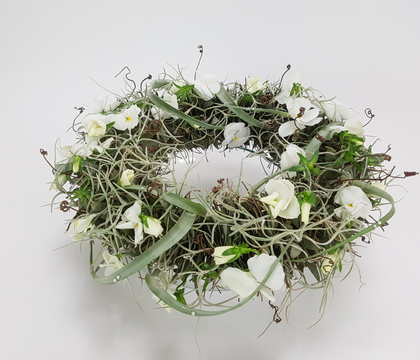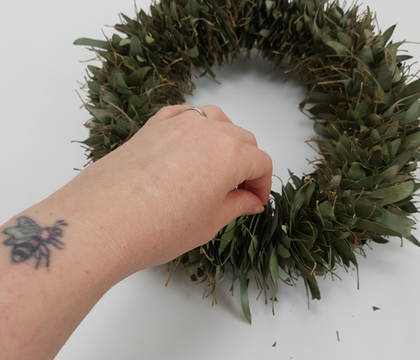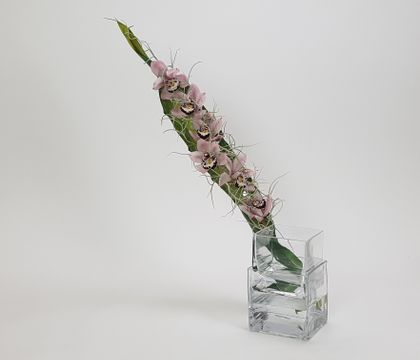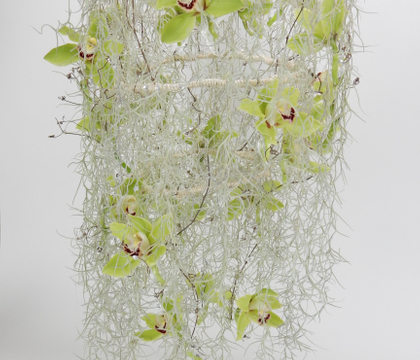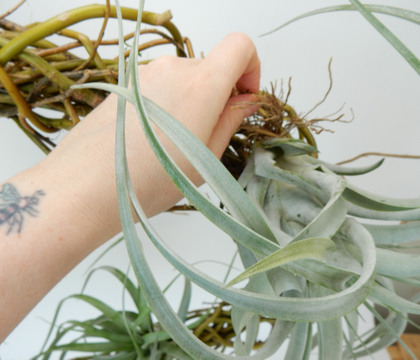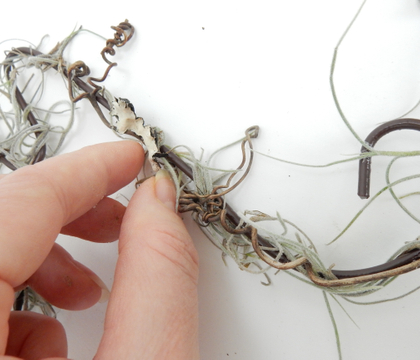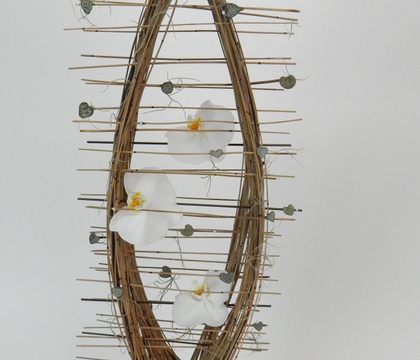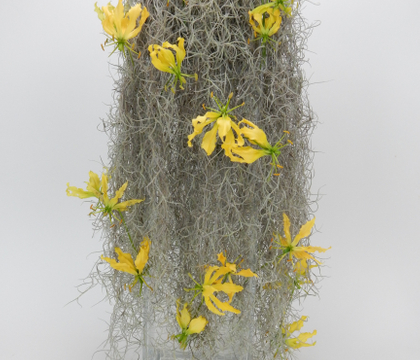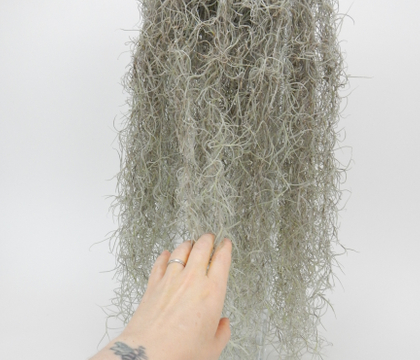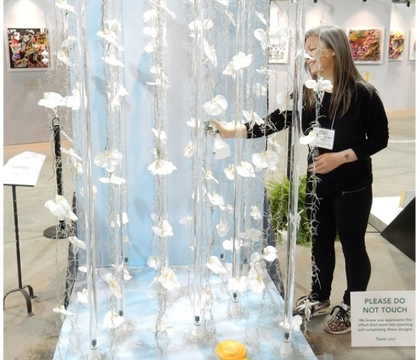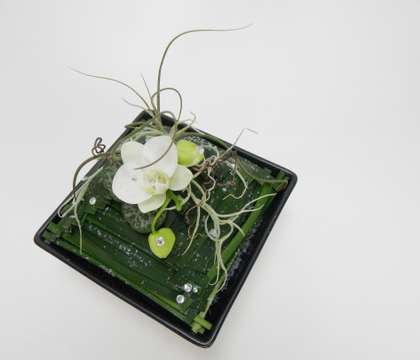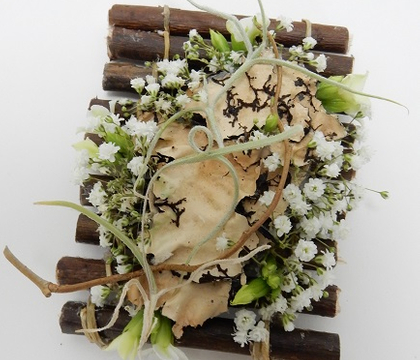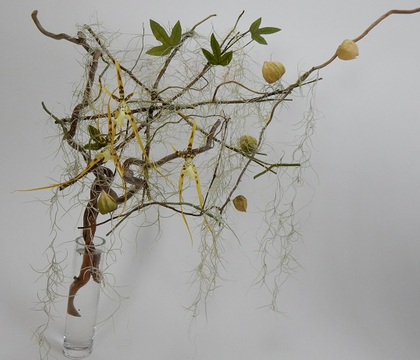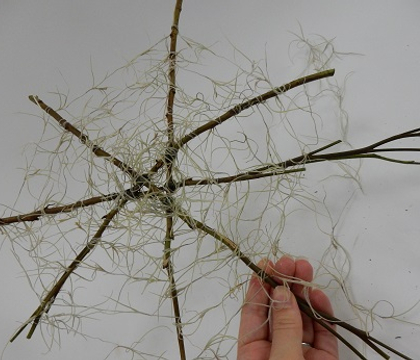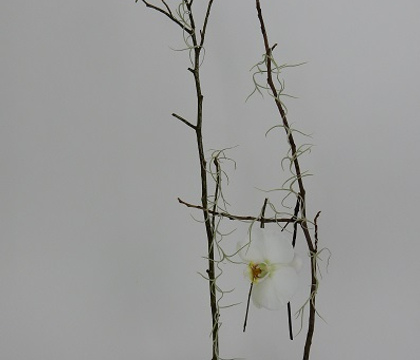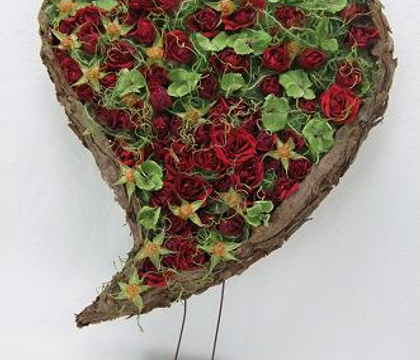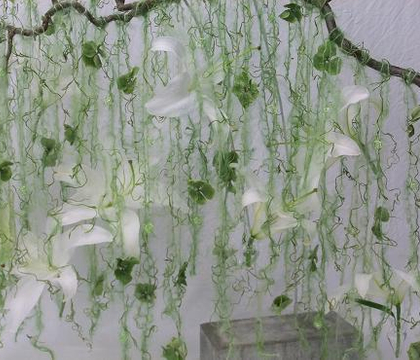Christine de Beer - effortless floral craftsman
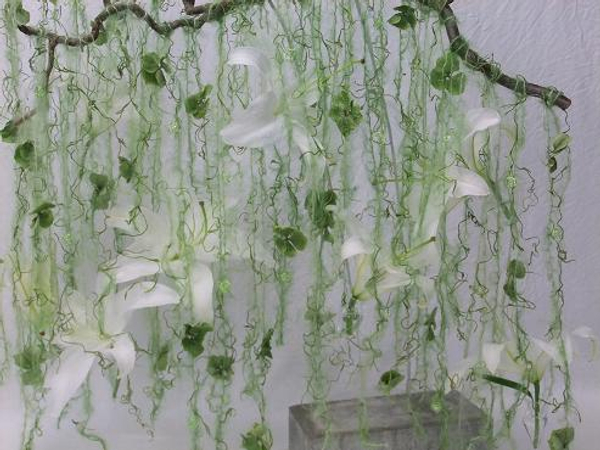
Tillandsia Usneoides
Spanish moss is not a true moss but an epiphytic plant that grows on other plants but makes its own food. The plant has no aerial roots but grows thin, curved or curly scaled leaves that hang like a chain and form long structures of up to 6 meters long. Spanish moss propagates by seed or will continue to grow if a fragment of the plant breaks and is carried or blown into a tree or branch.
Detail of my Stringing in the Rain design with Spanish moss, wool, hydrangeas and lilies.
Common name
Origin
Varieties
Colors
Vase life
Scent
Uses
Roll in a ball and use as a water retaining mechanic. It is also great to use as a natural stuffing to add bulk or cushion delicate objects. Can be used as mulch in planted designs or draped as insulation or a natural screen or even as fibres.
Conditioning
Wearing gloves dunk the moss under water and lightly wash it with a little bit of dishwashing soap to remove all bugs. Rinse well and spread out the moss to dry in full sun. Or seal the moss in an airtight container (or bag) for a week in a cool shaded area. This should also draw out any bugs hiding in the moss. Take care not to sweat or heat the moss. Rinse out and your moss is ready to work with. Do not microwave. Use dry or hydrate the moss for a few weeks before using in an arrangement
Sign up for my weekly newsletter
Every week I add a new design with related tutorials. Be sure to subscribe to receive an email notification with design inspiration.
